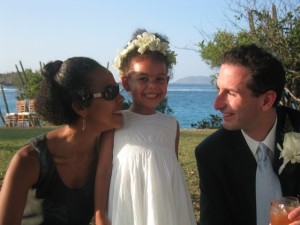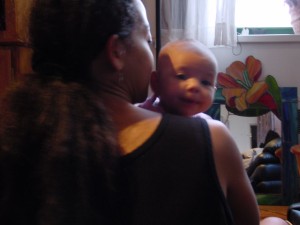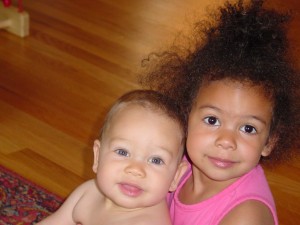When I think about my own multiracial identity, when I talk with other biracial writers and friends about the state of being mixed, I usually think of the cultures we inherited from our parents—what was represented in our homes and along the roots of our family trees.
But a question posed to The Ethicist in last week’s New York Times Magazine made me consider blended racial identity on a broader scale.
“Can I call my Nonbiological Twins black because my Husband is?”
The author of the question was a white woman, married to a black man. When she and her husband had been unable to conceive naturally, she had carried to term a donor embryo—the biological parents of whom were said to be Caucasian and Hispanic. The mother noted:
I am not comfortable being open about the origin of my children, except with family and close friends, until they are old enough for me to explain it to them.
But, when a pre-k application form asked the children’s race, failing to provide a “mixed race” or “other” box, the mother identified her children as black. “Was this the right choice?” She wondered. The Ethicist—Dr. Kwame Anthony Appiah, who is himself multiracial, white British and Ghanaian—devoted much of his response to what he would have responded had the twins been the biological children of their parents, going into depth about this country’s frequently challenged “one drop” rule. He concluded:
…our system of racial classification … presupposes an extremely oversimplified picture of the relationship among ancestry, appearance, biology and culture …
Dr. Appiah correctly faulted the preschool for not having a “mixed-race” or “other” box to check, and suggested that the mother demand one. He also affirmed the twins’ right to claim their non-biological father’s black heritage.
But what Dr. Appiah didn’t mention is an error the parents made long before the pre-k form appeared. Waiting until the children are “old enough” to have their heritage explained implies that there is something shameful about joining their family through donor insemination, something wrong with having a different racial background from their parents’. The time to broach such information is right away, using the simplest language possible—the same way you might talk to a baby about bedtime or the toys in his room.
Years ago as an adoption caseworker, I encouraged families adopting from China and Vietnam to learn about and incorporate their children’s cultures of origin into their family life. Even in domestic adoptions where the child could “pass” for their parents’ biological offspring, I urged families to begin sharing the adoption story immediately—before the child could understand. Talking about difference and culture becomes as natural as breathing. This is your nose, those are your toes, this is a photograph of the day we met you in a place called Guangzhou, where you were born.
This way, there’s no fraught moment in the child’s life when parents must sit them down and reveal the Momentous Truth. Though less has been written about children born via donor insemination than adoption, I believe this same openness should prevail.
Where it gets tricky is the discussion of appearance. Going back to the twins in the Ethicist’s question, what will it be like for them to identify as black if they don’t look black? As Dr. Appiah points out in his response, there are many people whose African features are not visible—he names early N.A.A.C.P. director, Walter White—who identify as black. Besides, these twins are Hispanic, which is not a race, but in many cases includes some African ancestry.
My own experience is somewhat reversed. Many people perceive me as black—not mixed—so when I identify as biracial, I am often corrected: you’re black. In graduate school, when I identified as Jewish—an ethnicity as well as a religion—it meant to some African American students that I was denying my blackness. But to identify as black and only black would be to disregard my mother’s ancestry and half of my own.
Another troubling issue: the mother who wrote to the Ethicist was given few specifics about the embryos’ heritage. Only Caucasian (Swedish? Dutch? Irish?) and Hispanic (Dominican? Venezuelan? Puerto Rican?). The parents are not to blame for this oversight. I know from my friends who have had children through donor insemination that you don’t get much control over how much genetic information you’re given, if any. But in an ideal world, these parents would be able to share the twins’ whole heritage—genetic and adoptive— with them.
One of my closest friends had her twin sons with the aid of an egg donor. Before her boys could understand the word “fertility,” they knew that somewhere in the world was a Very Special Lady who had made it possible for Mommy and Daddy to be their parents. Now the boys are three and the special lady is part of their family dialogue, as is her country, which the twins may visit someday. As they grow, these boys will have more questions which my friend and her husband will be happy to answer. These twin boys will know who they are genetically as well as culturally. One day, they too will be faced with boxes to check. They may choose one or more; they may choose to leave them all blank. Either way, by the time they are old enough to hold a pencil, my friend’s sons will understand that no box will ever truly define who they are.
-Lisa W. Rosenberg, Festival Blogger


